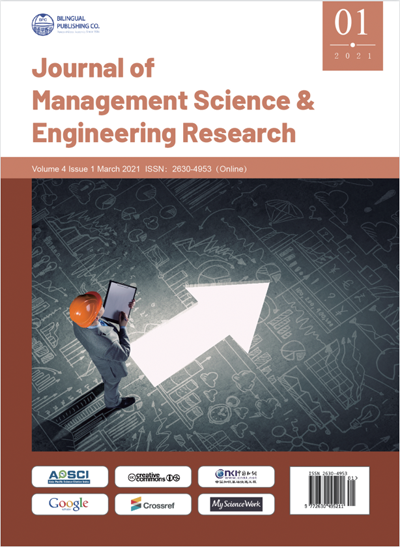-
4735
-
3718
-
2237
-
1220
-
1073
Understanding of an ‘Enlightened Planning’ Approach in Project Risk Management
DOI:
https://doi.org/10.30564/jmser.v4i1.2854Abstract
This article explains the execution and delivery progression phases of the project lifecycle. It is the third phase of the project lifecycle that leads to the final realization of the project's goals. However, this essay will describe the understanding of the ‘enlightened planning’ approach during the execution and delivery strategy progress of a project’s lifecycle. The features and details in the Enlightened Planning and PMI PMBOK Guide are compared. The author explored the nature and role of basic frameworks such as the project lifecycle, the process phase structure, and key project definition questions — the seven Ws (Who, Why, What, Which way, Wherewithal, When, Where). Combining Enlightened Planning and PMI PMBOK Guide, the differences between the two approaches are given. In addition, the author elaborated the advantages and disadvantages of the two approaches in current practice.Keywords:
Enlightened planning, Risk management, Project lifecycleReferences
[1] PMBOK Guide. (2008), A Guide to the Project Management Body of Knowledge. 4th ed., Newtown Square. PA: Project Management Institute,Inc.,DOI:https://doi.org/10.30564/jmser.v4i1.285429 Journal of Management Science & Engineering Research | Volume 04 | Issue 01 | March 2021 Distributed under creative commons license 4.02008, p.273.
[2] DOVAL, E. (2019), ‘Risk Management Process in Projects’, Review of General Management,29(2), pp. 97–113. Available at: http://search. ebscohost.com/login.aspx direct=true&db=bth&AN=141427487&site=eds-live [Accessed: 1 May2020].
[3] Górecki, J. (2018), Big Data as a Project Risk Management Tool, In book: Risk Management Treatise for Engineering Practitioners, November 2018, DOI: 10.5772/intechopen.79182;
[4] Rekha J.H, Parvathi R. (2015), Survey on Software Project Risks and Big Data Analytics, 2nd International Symposium on Big Data and Cloud Computing(ISBCC’15),DOI:10.1016/j.procs.2015.04.045;
[5] Ward, S. and Chapman, C. (2003), Transforming project risk management into project uncertainty management. Available at: http://search.ebscohost. com/login.aspx direct=true&db=ir00356a&AN=eps. 35837&site=eds-live [Accessed: 1 May 2020].
[6] Chapman, C. (2019), Enlightened planning: Using systematic simplicity to clarify opportunity, risk and uncertainty for much better management decision making. Taylor and Francis. DOI: 10.4324/9780429425394.
[7] APM. (1997), PRAM Project Risk Analysis and Management Guide. Association for Project Management (APM), Norwich.




 Qianlin Yang
Qianlin Yang





